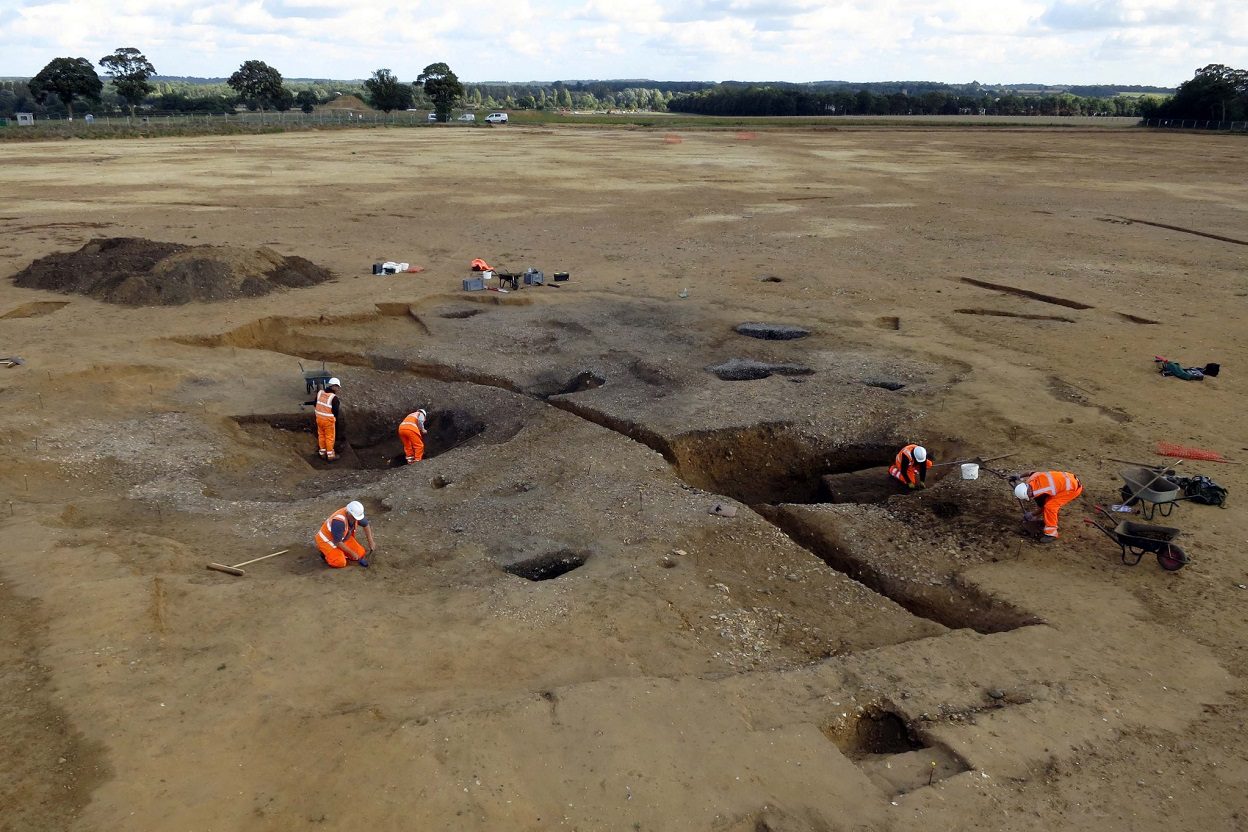Archaeologists from Cotswold Archaeology have discovered a Bronze Age burnt mound complex in Suffolk, England.
The discovery was made during excavations at Laxfield, where trial trenching revealed a burnt mound complex and an enclosure system from the Bronze Age, in addition to the remains of three Iron Age roundhouses and evidence of medieval activity.
Burnt mounds are enigmatic prehistoric features known from across the British Isles. Well-preserved examples are characterised by a flattened mound formed from discarded burnt stones. The stones were heated which functioned as “pot boilers”, heating water in nearby earth-cut, possibly timber-lined troughs.
The purpose of burnt mounds is speculated, with one interpretation suggesting that they served as saunas for bathing. Other theories suggest dyeing or leather treatment, fulling, or for cooking. They are often found near a river, spring, or natural water source, however, for the example at Laxfield, a large pit or well was dug to the level of the water table.
Dating the site was possible by a radiocarbon analysis of preserved organic plant material found in the waterlogged soils filling the well – indicating that the burnt mound ceased being active before the Middle Bronze Age.
The enclosure system dates to around the Middle Bronze Age and was used for livestock farming, although this occurred after the activities of the burnt mound.
The area of the enclosures became active again during the Iron Age, with the construction of three roundhouses and evidence of domestic waste.
The larger of the roundhouses was dated by the Iron Age pottery and other finds from its surrounding gully, in addition to domestic waste dumped in the top of the adjacent Bronze Age ditch.
Little associated evidence was found in the other two roundhouses to confirm a date, but the team suggest that these two are also from the Iron Age based on their locality to the larger roundhouse remains.
Header Image Credit : Cotswold Archaeology







